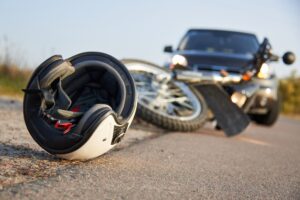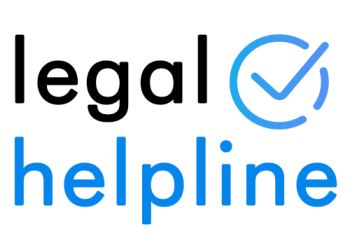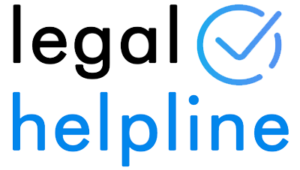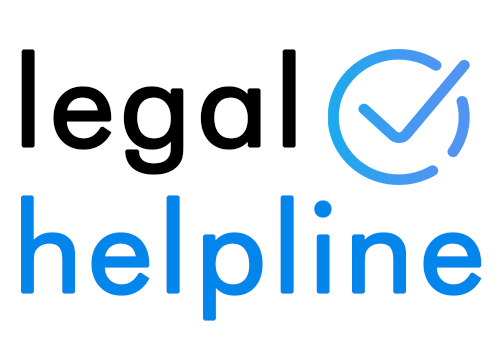This guide looks at the eligibility criteria to begin a personal injury claim after a motorcycle accident. We examine the duty of care road users have for each other and the laws and regulations which must be abided by.
We have provided some example scenarios of how motorcycle accidents can occur following breaches of this duty, and the types of harm that could be sustained. We have a section that looks at compensation guideline brackets for different types of harm that could be sustained in a road traffic accident.
The final section of this guide examines the benefits you can experience when starting your personal injury claim with a solicitor from our panel under the No Win No Fee contract that they offer.

The team at Legal Helpline are on hand to address any questions you might have and provide a free zero-obligation assessment of your particular circumstances. To speak to one of our dedicated advisors, use the following contact details:
- Phone 0333 000 0729.
- Use The Contact Us Form
- Connect With An Advisor In The Chat Option.
Browse Our Guide
- What Is A Personal Injury Claim After A Motorcycle Accident?
- Who Could Be At Fault?
- How To Prove Your Personal Injury Claim After A Motorcycle Accident
- Valuing A Personal Injury Claim After A Motorcycle Accident
- Could I Make A No Win No Fee Claim?
- Further Resources On Personal Injury Claims
What Is A Personal Injury Claim After A Motorcycle Accident?
All road users owe a duty of care to one another when navigating the road network in that they must do everything they reasonably can to prevent harm. This means they must adhere to the rules set out by the Highway Code and Road Traffic Act 1988. The Highway Code lists motorcyclists as road users requiring extra care under Rule 204 since they lack the additional protections of vehicle drivers.
Additionally, the Occupier’s Liability Act 1957 imposes a duty of care on parties in control of public places to take steps to ensure the reasonable safety of all visitors.
The eligibility criteria to begin a personal injury claim after a motorcycle accident are as follows:
- A third party owed you a duty of care at the time of the motorcycle accident.
- That third party breached the duty of care they owed to you.
- This breach resulted in an accident where you sustained injuries.
What Is The Time Limit For Making A Personal Injury Claim After A Motorcycle Accident?
The limitation period for personal injury claims is generally 3 years from the accident, as per the Limitation Act 1980. In certain circumstances, exceptions to this can apply, and an extension may be granted. To find out about the time limit, and if any exceptions apply to your particular circumstances, speak to our advisors using the contact details above.
Who Could Be At Fault?
Below we have provided a few example scenarios of how another road user or an occupier could cause a motorcycle accident. For example:
- A driver under the influence collides with a motorcyclist when pulling out of a junction without looking. The rider sustained multiple injuries, including a badly broken leg.
- A driver fails to adequately look when pulling out of their driveway. They strike a motorcyclist, who is subsequently pushed into oncoming traffic. The motorcyclist suffered a serious head injury in the collision.
- A pothole at a roundabout has been reported to the local council. The council has failed to take action to repair the pothole in an adequate timeframe. A motorcyclist hits the pothole, loses control of their motorcycle and veers off the road. The rider sustained a severe elbow fracture in the crash.
If you are deemed to be partially at fault for the accident, it may be possible to make a split liability claim.
Compensation in a split liability claim is reduced by the percentage you are deemed at fault for the accident. So if you are deemed to be 50% to blame for the accident, your compensation amount will be reduced by 50%.
How To Prove Your Personal Injury Claim After A Motorcycle Accident
To support your personal injury claim after a motorcycle accident, you will need to provide evidence demonstrating the fault of the third party. You will also need to prove the extent of your injuries. We have set out some examples of evidence that could be collected here:
- Seek medical treatment following any accident. This is important for your health and well-being, but you can also acquire copies of medical documents, such as scans or test results, to highlight the extent of your injuries.
- Video footage such as from CCTV cameras or dash-cam devices can show how an accident occurred.
- You could take photographs of your injuries, the cause and the immediate scene of the accident, but only if it is safe to do so.
- Collect the contact information of potential witnesses so they can provide a statement during the claims process.
You may benefit from working with a solicitor when collecting evidence for your claim. Contact our advisors today for a free consultation regarding your potential claim’s validity. A solicitor from our panel of personal injury experts could assist you with collecting evidence if it is decided you have valid grounds to proceed with the claim.
Valuing A Personal Injury Claim After A Motorcycle Accident
Compensation following a successful personal injury claim after a motorcycle accident can be comprised of two different heads of claim. The first of these is called general damages. General damages awards for the physical and psychological harm caused by the accident.
Solicitors can refer to the Judicial College Guidelines (JCG) to assist them in calculating a possible value for your injuries. This document is published by the Judicial College and contains guideline award brackets for a multitude of different injuries. We have taken some of these brackets and used them in the compensation table below.
Compensation Table
Please note that this table has been provided for guidance purposes only as personal injury claims are assessed individually.
Part of Body Injured JC Guideline Bracket Supporting Notes
Head (b) Moderately Severe - £219,070 to £282,010 Significant and permanent disability that results in dependence on others for professional care.
Neck (a) Severe (ii) - £65,740 to
£130,930
Fractures of a serious nature in the cervical spine causing nerve damage and loss of function.
Back (b) Moderate (ii) - £12,510 to £27,760
Regularly encountered injuries such as disturbance of ligaments and muscles giving rise to backache.
Arm (b) Injuries Resulting in Permanent and Substantial Disablement - £39,170 to £59,860 Fractures to one or both forearms causing significant residual disability: functional or cosmetic issues.
Elbow (b) Less Severe Injuries - £15,650 to £32,010 Causing impaired function but not requiring major surgery or disability of a significant nature
Pelvis (a) Severe (iii) - £39,170 to £52,500 Injuries that cause degenerative changes, leg instability and increasing the likelihood of hip replacement being necessary
Leg (b) Severe Leg Injuries (iii) - £39,200 to £54,830 Compound and comminuted fractures requiring prolonged treatment and causing arthritis, scarring and instability
Knee (a) Severe (ii) - £52,120 to £69,730 Leg fractures that can extend into the knee causing constant pain and limiting movement
Ankle (b) Severe - £31,310 to £50,060 Injuries requiring lengthy period in plaster causing sleep disturbance and unsightly scarring.
Post-Traumatic Stress Disorder (PTSD) (a) Severe - £59,860 to £100,670 Permanent trauma issues that impact all areas of the person's life.
Special Damages
The second of the two heads of claim is special damages. Financial losses stemming from your injuries could be reimbursed under special damages as part of your compensation settlement. Examples include:
- Travel expenses.
- In-home care and assistance.
- Lost earnings.
- Out-of-pocket medical costs.
- Home adaptations.
To get a more detailed estimate of what compensation you could be awarded following a successful claim, speak to our advisors today. You can talk to a team member via any of the contacts given below.
Could I Make A No Win No Fee Claim?
Talk to our advisors today for a free consultation regarding the validity of your potential claim. You could then be offered a No Win No Fee contract called a Conditional Fee Agreement (CFA) by a solicitor from our panel if your potential claim is deemed valid.
By working with a personal injury solicitor on your claim under a CFA, you will experience a number of key benefits. Firstly, in most cases, there are no upfront fees for the solicitor to begin working on your case. Secondly, there are also no fees for this work during the claims process itself. In the event your claim fails, you will not pay any fees for the solicitor’s services.
Successful personal injury claims after motorcycle accidents are awarded with a compensation payout. The solicitor will deduct a percentage before sending the remainder to you. This is called a success fee. The maximum success fee percentage that can be charged is legally capped. Therefore, you will keep most of any awarded compensation.
The team at Legal Helpline are on hand to address any questions you might have and provide a free zero-obligation assessment of your particular circumstances. To speak to one of our dedicated advisors, use the following contact details:
- Phone 0333 000 0729.
- Use The Contact Us Form
- Connect With An Advisor In The Chat Option.
Further Resources On Personal Injury Claims
Read more about personal injury claims here:
- Read our guide on claiming after a fatal motorcycle accident.
- Find out more about making a claim following a bus accident.
- Learn if you could make a claim after being injured as a passenger.
- Read more about potential motorcycle accident claim amounts.
External resources:
- The government have issued guidance on motorcycle safety which you can find here.
- See the motorcycling campaign from THINK!
- The Royal Society for the Prevention of Accidents has published this resource on motorcycle advice and training.
Thank you for reading our guide on how to begin a personal injury claim after a motorcycle accident. To find out more about how Legal Helpline could assist you after an an accident on the road, speak to our advisors today using the contact information given above.
Author
-

Tracy Chick is a dedicated and expert Road Traffic Accident lawyer, holding a prestigious MASS Diploma in her field. When she's not immersed in the complexities of legal cases, Tracy loves to be outdoors, particularly enjoying any kind of water-related activity.
View all posts Road Traffic Accidents Lawyer




